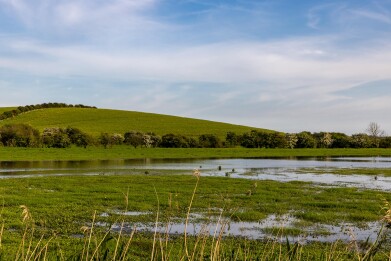River water monitoring
Why floodplains are essential infrastructure in a rainier Britain
Oct 21 2024
Floodplains, the flat areas of land adjacent to rivers, have long served as natural flood buffers, absorbing excess rainwater and preventing downstream flooding. As the UK experiences increasing rainfall due to climate change, the need to restore and expand floodplains has never been more urgent. These natural flood management systems can mitigate the impacts of heavier and longer rainy seasons, which are becoming more common in the UK.
Climate change is intensifying rainfall patterns, leading to more frequent and severe floods. Projections suggest that the UK is likely to face wetter winters and more extreme rainfall events as global temperatures rise. These changes put significant pressure on the country's antiquated sewer systems, which were not designed to handle such volumes of water. Many UK cities rely on combined sewer systems, where stormwater and wastewater are transported in the same pipes. During heavy rain events, these systems can become overwhelmed, leading to sewer overflows and water pollution. Floodplains offer a natural solution by allowing rivers to overflow safely, reducing pressure on urban drainage infrastructure.
Restoring floodplains would not only alleviate pressure on outdated infrastructure but also support biodiversity and improve water quality. Floodplains act as natural reservoirs, temporarily holding excess rainwater and gradually releasing it, which reduces the risk of flash flooding in populated areas. In addition, floodplains provide critical habitats for wildlife and serve as natural filters, removing pollutants from runoff before the water returns to rivers and lakes. This dual function of floodplains—flood management and water purification—makes them an essential part of climate resilience strategies.
Historically, many floodplains in the UK were drained and converted to agricultural or urban land, diminishing their capacity to manage floods. The consequences of this land-use change have become increasingly evident as extreme weather events cause more frequent and severe flooding. Rewilding efforts, where floodplains are restored to their natural state, are gaining traction as an effective, low-cost approach to managing flood risks. These initiatives also align with broader environmental goals, such as increasing biodiversity and enhancing ecosystem services.
Beyond addressing immediate flood risks, the restoration of floodplains can help the UK adapt to longer-term climate challenges. As rainy seasons become heavier and more prolonged, floodplains offer a sustainable means of managing the increased volume of water. In contrast to traditional engineering solutions like levees and flood barriers, which can be costly to build and maintain, floodplains work with nature to absorb and dissipate floodwaters. By expanding the network of functional floodplains, the UK can create a more resilient landscape that is better equipped to cope with future climate extremes.
Floodplains are a natural, cost-effective solution to managing the increasing volumes of rainwater brought about by climate change. In conjunction with upgrading sewer systems and implementing sustainable drainage solutions, floodplain restoration offers a path toward a more resilient future for UK communities. As climate change continues to shape the country’s weather patterns, integrating floodplains into urban and rural planning will be essential to safeguarding both people and the environment from the growing threat of flooding.
Digital Edition
IET 35.2 March
April 2025
Air Monitoring - Probe Sampling in Hazardous Areas Under Extreme Conditions - New, Game-Changing Sensor for Methane Emissions - Blue Sky Thinking: a 50-year Retrospective on Technological Prog...
View all digital editions
Events
Apr 29 2025 Edmonton, AB, Canada
May 06 2025 Nuremberg, Germany
May 10 2025 Karachi, Pakistan
May 11 2025 Vienna, Austria
May 11 2025 Seoul, South Korea



.jpg)








_(4427399123)-(2).jpg)






